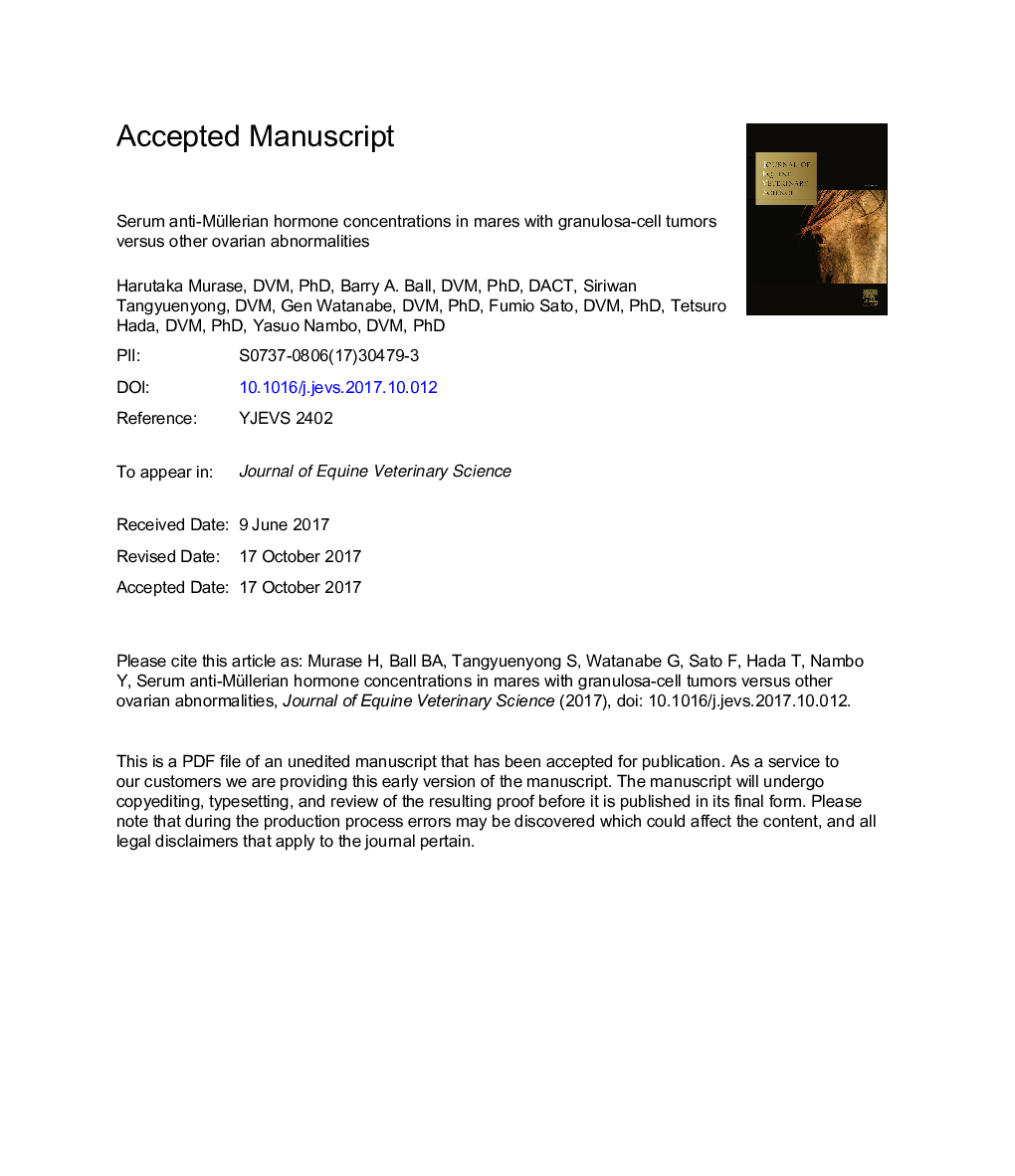| Article ID | Journal | Published Year | Pages | File Type |
|---|---|---|---|---|
| 8483302 | Journal of Equine Veterinary Science | 2018 | 21 Pages |
Abstract
Recently, anti-Müllerian hormone (AMH) has been reported as a useful diagnostic marker for equine granulosa cell tumors (GCTs). The aim of this study was to examine and compare serum AMH and immunoreactive (ir)-inhibin concentrations in mares with ovarian abnormalities other than GCT compared to mares with known GCT in order to determine more useful diagnostic criteria. Mares with a possible GCT based upon history were subsequently classified into those with GCT confirmed by histopathology and mares with other abnormal ovaries (AO) without a GCT based on follow-up fertility information. Median concentrations of AMH were 72.6Â ng/mL (quartiles: 20.6-458.5Â ng/mL) in GCT and 0.70Â ng/mL (0.26-1.44Â ng/mL) in AO mares, and median concentrations of ir-inhibin were 2.36Â ng/mL (1.65-3.79Â ng/mL) in GCT versus 0.93Â ng/mL (0.69-1.46Â ng/mL) in AO mares. The cutoff values based on receiver operating characteristic (ROC) analysis were 4.70Â ng/mL for AMH and 1.65Â ng/mL for ir-inhibin. These cutoff values were slightly higher than the traditional value based on the normal reference range. The sensitivity, specificity, accuracy, and area under the ROC curve of AMH were higher than those of ir-inhibin. In conclusion, we demonstrated the diagnostic criterion of serum AMH concentration for equine GCT. Anti-Müllerian hormone is a more useful marker for diagnosis of equine GCT than ir-inhibin.
Keywords
Related Topics
Life Sciences
Agricultural and Biological Sciences
Animal Science and Zoology
Authors
Harutaka Murase, Barry A. Ball, Siriwan Tangyuenyong, Gen Watanabe, Fumio Sato, Tetsuro Hada, Yasuo Nambo,
